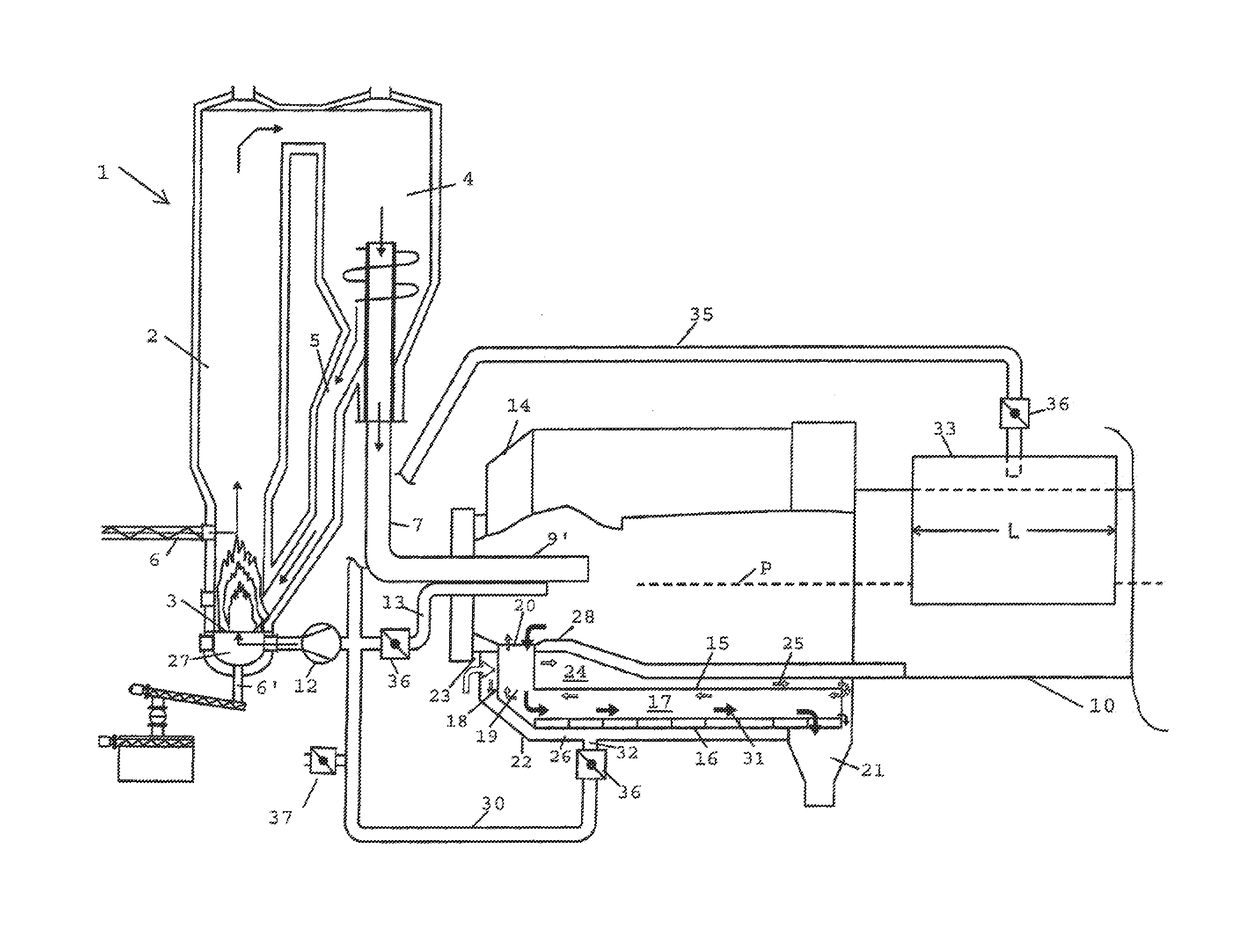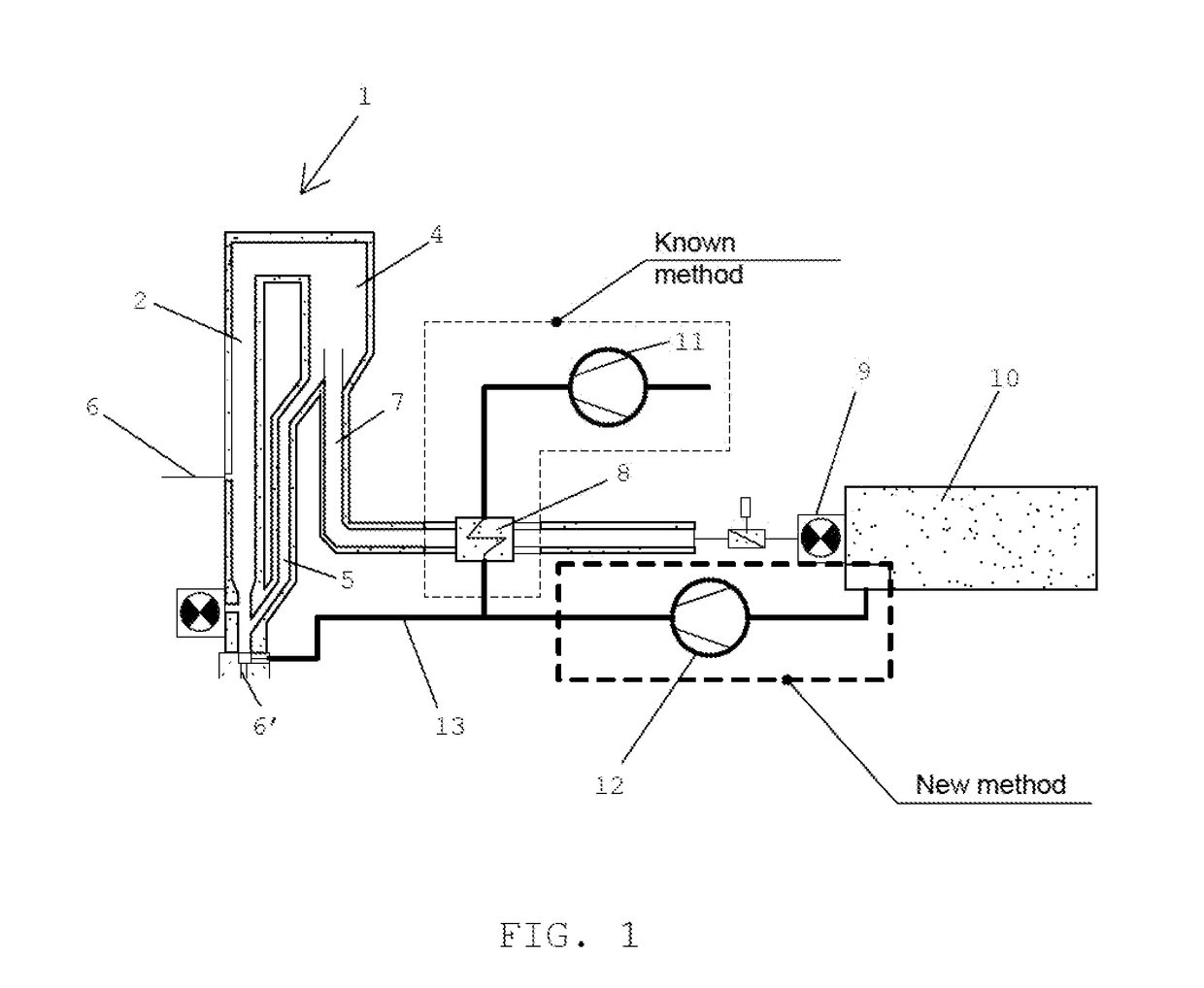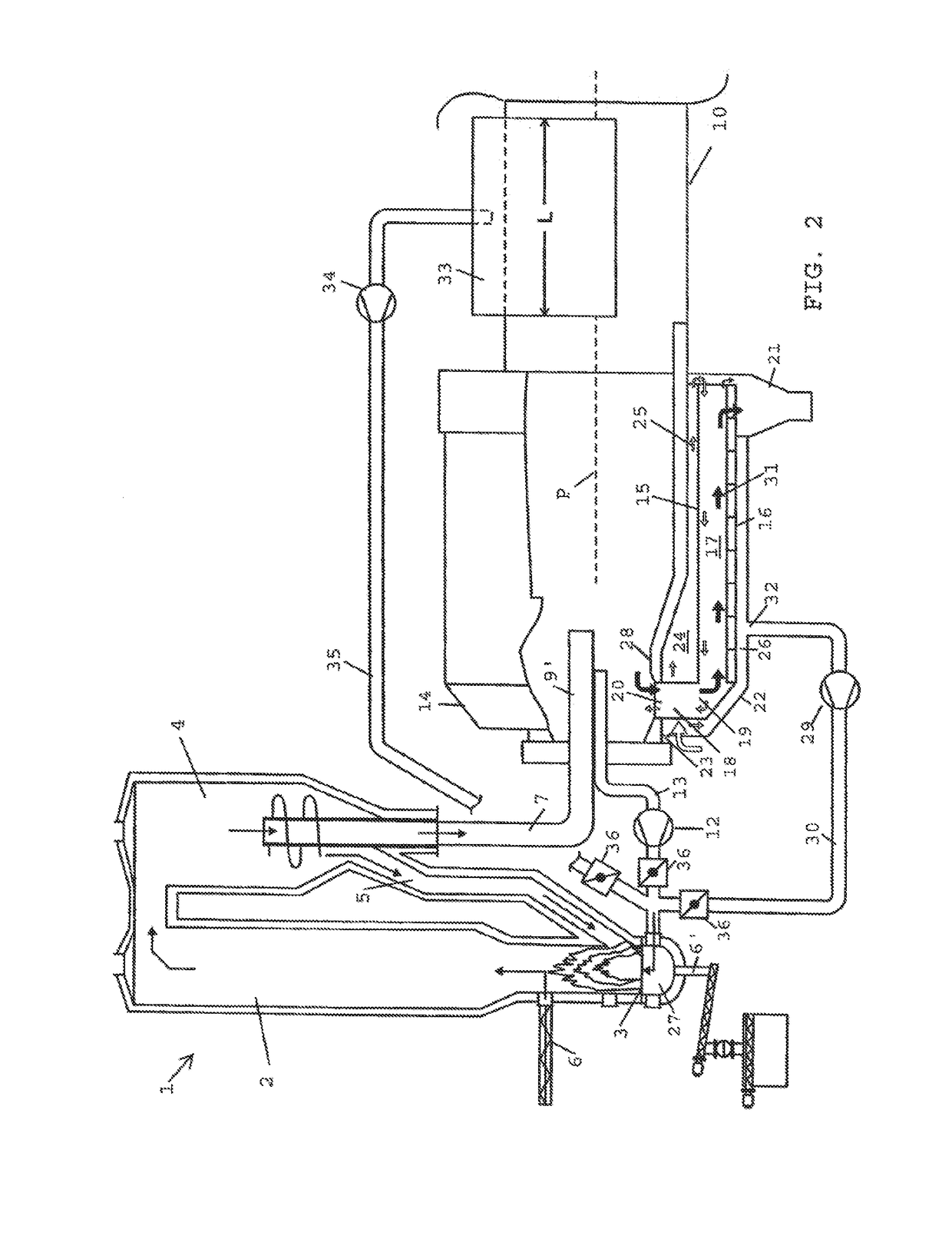Method and arrangement for burning lime mud
a technology of lime mud and combustion chamber, which is applied in the field of method and arrangement for burning lime mud, can solve the problems of high combustion air requirement, high energy consumption, and inability to prove the quality of lime produced and combustion costs as advantageous, and achieve the effect of improving the energy economy of gasifier/lime kiln arrangement and efficiently utilizing the thermal energy being released
- Summary
- Abstract
- Description
- Claims
- Application Information
AI Technical Summary
Benefits of technology
Problems solved by technology
Method used
Image
Examples
Embodiment Construction
[0036]FIG. 1 illustrates components of a lime mud combustion plant and a gasifier that are needed for describing the invention. The gasification unit is in this case a circulating fluidized bed gasifier 1, i.e. a CFB-gasifier. It comprises a gasification reactor 2, a grate 3, a cyclone 4 and a cyclone return pipe 5. A fluidized bed is arranged at the lower part of the gasifier, above which bed a fuel is introduced. The fuel is typically solid bio-based fuel 6, such as bark, wood chips etc. Ash generated in the gasification is removed via conduit 6′.
[0037]The hot product gas exits the gasifier via duct 7 and is partially cooled in an air preheater 8. Then the product gas is led into a burner 9 of the lime kiln 10 via the gas duct 7.
[0038]In this known arrangement, the combustion air for the gasifier is introduced by means of a fan 11 from ambient conditions. Prior to feeding into the gasifier, the air is heated typically to 300-400° C. by cooling hot product gas from the gasifier in ...
PUM
| Property | Measurement | Unit |
|---|---|---|
| surface temperature | aaaaa | aaaaa |
| temperature | aaaaa | aaaaa |
| temperature | aaaaa | aaaaa |
Abstract
Description
Claims
Application Information
 Login to View More
Login to View More - R&D
- Intellectual Property
- Life Sciences
- Materials
- Tech Scout
- Unparalleled Data Quality
- Higher Quality Content
- 60% Fewer Hallucinations
Browse by: Latest US Patents, China's latest patents, Technical Efficacy Thesaurus, Application Domain, Technology Topic, Popular Technical Reports.
© 2025 PatSnap. All rights reserved.Legal|Privacy policy|Modern Slavery Act Transparency Statement|Sitemap|About US| Contact US: help@patsnap.com



